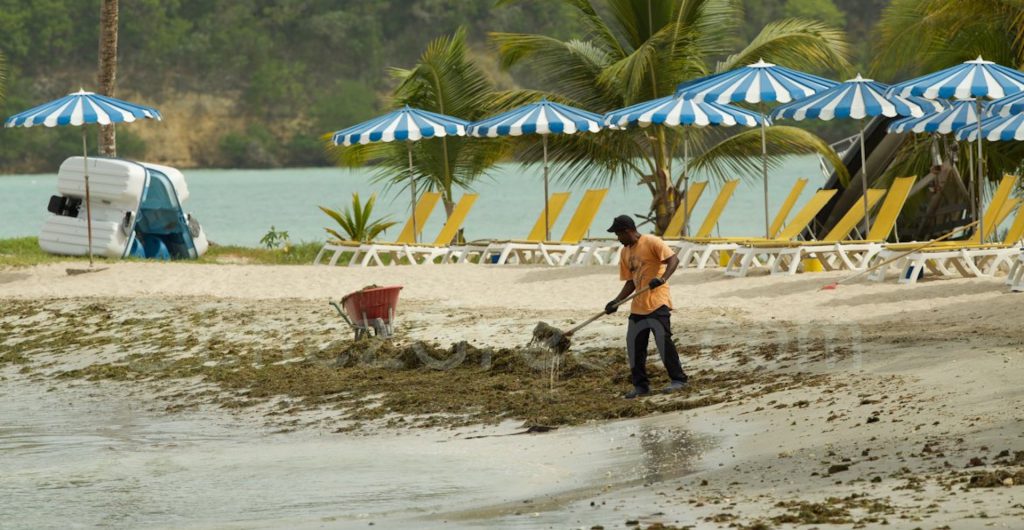Reserves of seaweed forming along the North Equatorial Counter Current due to anthropogenic action
Since 2011, the seaweed invasion has affected many Caribbean islands, including Martinique, Gadeloupe, St. Lucia, Grenada, Barbados and St. Bartholome. The Sargassum swamped their beaches and coasts, and left an awful sulphur stench from the rotting weed.
So far this unprecedented phenomenon has forced hoteliers to drive their guests daily to the beaches on the west coast or in the worst case to shut down in order to remove 10,000 tons of seaweed from their beaches.
A serious public health problem
Recurrent accumulations of Sargassum turn not only to economic calamity since it is necessary to close access to some beaches which scares away tourists, but they also pose a serious public health problem.
Many residents complain of nausea, and eye, throat and ears irritation. Some schools had to close because of the unbearable smell. In the French carribean islands, health services have set up daily H2S and ammonia measurement systems in order to monitor harmfulness.
They enhance lion fishes concentration
The impact on the marine ecosystem is not reassuring, especially regarding the upsurge of lionfish invasive species whose concentration is enhanced by the Sargassum benches. Furthermore, algae clusters congregate along the shorelines depriving coastal flora and fauna from light and prevent turtle nesting!
Nonetheless, the Center for Fisheries Research and Development, Gulf Coast Research Laboratory, University of Southern Mississippi, has recently indicated that it is not the Sargasso Sea that has been changing its pattern but rather new reserves of seaweed forming along the North Equatorial Counter Current due to anthropogenic action. This new blooming site, drifting on to the shores of Caribbean and West African countries, is what threatens the livelihood of people in both regions.




